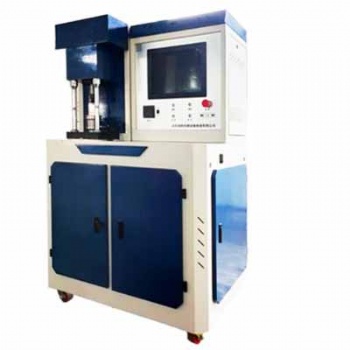News
Everything You Need to Know About the Computerized Hydraulic Universal Testing Machine
Everything You Need to Know About the Computerized Hydraulic Universal Testing Machine
In the world of material testing, precision and versatility are paramount. The computerized hydraulic universal testing machine (UTM) meets these needs by combining robust hydraulic power with advanced computer control. This machine is designed to evaluate a wide range of materials under tensile, compression, and bending loads, making it indispensable for quality control and research applications.
In this blog, we’ll explore the features, applications, and benefits of a computerized hydraulic UTM and why it’s a vital tool across industries.
What is a Computerized Hydraulic Universal Testing Machine?
A computerized hydraulic UTM is a high-capacity material testing system powered by hydraulic actuators and controlled by sophisticated software. Its core purpose is to measure the mechanical properties of materials such as metals, composites, and concrete, enabling industries to assess strength, ductility, stiffness, and other critical parameters.
Key Features
Hydraulic Power System
The hydraulic mechanism provides high-force capacity, ranging from 100 kN to 3000 kN, making it suitable for testing heavy-duty materials like steel and reinforced concrete.Computerized Control
Advanced software integration allows for precise control, data acquisition, and analysis. Real-time graphs and reports streamline the testing process.Versatile Testing Capabilities
Tensile Tests: Evaluate tensile strength and elongation properties.
Compression Tests: Test materials for compressive strength and deformation.
Flexural Tests: Analyze bending strength for beams and other structural components.
Interchangeable Grips and Fixtures
A variety of grips and fixtures ensure compatibility with different specimen types and sizes.Load Frame and Safety Features
A rigid load frame minimizes deflection under high loads, while safety interlocks and overload protection ensure operator safety.
Applications of Computerized Hydraulic UTMs
Construction Materials Testing
Concrete cubes and cylinders for compressive strength.
Reinforced steel bars for tensile and bending properties.
Metal and Alloy Testing
Evaluate the ductility, tensile strength, and yield point of metals like aluminum, steel, and copper.
Aerospace and Automotive Materials
Testing high-strength alloys and composites for safety-critical applications.
Research and Development
Academic and industrial labs use UTMs to develop new materials and validate engineering designs.
Advantages of a Computerized Hydraulic UTM
High Capacity Testing
Its hydraulic power system enables testing of high-strength materials that traditional screw-driven systems cannot handle.Enhanced Precision
The computerized system ensures accurate load and displacement measurements, even under variable test conditions.Real-Time Data Processing
Advanced software provides instant feedback, including stress-strain curves, yield points, and ultimate strength.Customizable Test Configurations
Easily adjust grips, fixtures, and settings to accommodate various standards like ASTM, ISO, GB, and EN.Durability and Long Service Life
Designed for heavy-duty use, these machines are built to last, reducing downtime and maintenance costs.
Test Standards Supported
A computerized hydraulic UTM complies with several international test standards, including:
ASTM E8: Tensile testing of metals.
ISO 6892: Metallic materials tensile testing.
ASTM C39: Compressive strength of concrete.
GB/T 228: Tensile testing of metallic materials.
How It Works
Specimen Mounting:
Place the specimen in the appropriate grips or fixtures, ensuring alignment with the load axis.Parameter Setting:
Input test parameters such as load rate, specimen dimensions, and test type into the control software.Test Execution:
Start the test, and the hydraulic system applies the load while the computer records real-time data.Results Analysis:
Review and analyze stress-strain graphs, modulus values, and failure points generated by the software.
Choosing the Right Machine
When selecting a computerized hydraulic UTM, consider:
Capacity Requirements: Match the machine’s force capacity to the materials you’ll test.
Standards Compliance: Ensure compatibility with the test standards relevant to your industry.
Software Capabilities: Look for user-friendly software with customizable testing protocols.
Service and Support: Opt for a supplier with a proven track record of reliable service.
Why Choose Us?
At Jinan Wangtebei Instrument and Equipment Co., Ltd., we specialize in computerized hydraulic universal testing machines designed for precision, durability, and ease of use. With customizable configurations and support for multiple standards, our machines are trusted by industries worldwide.
Visit wtbte.com to learn more or contact us for expert advice on selecting the right testing machine for your needs.
Unlock the full potential of material testing with a computerized hydraulic UTM today!
180° peel force tester, textile fabric tensile testing machine, Computerized glass three and four point flexural testing machine
Categories
Contact Us
- +86-18615632092
- wtbequipment@hotmail.com
- sophie-tester
- +86-18615632092




 售前客服
售前客服